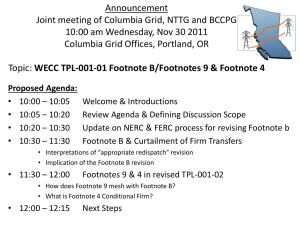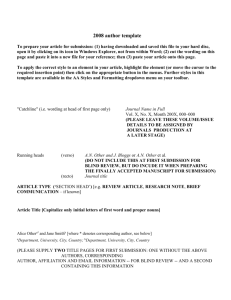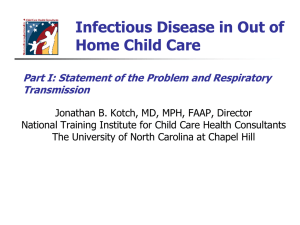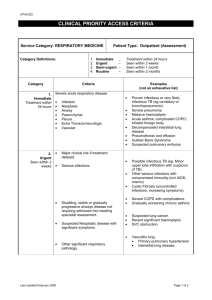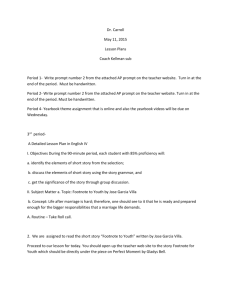ü - Scotland`s Health on the Web
advertisement
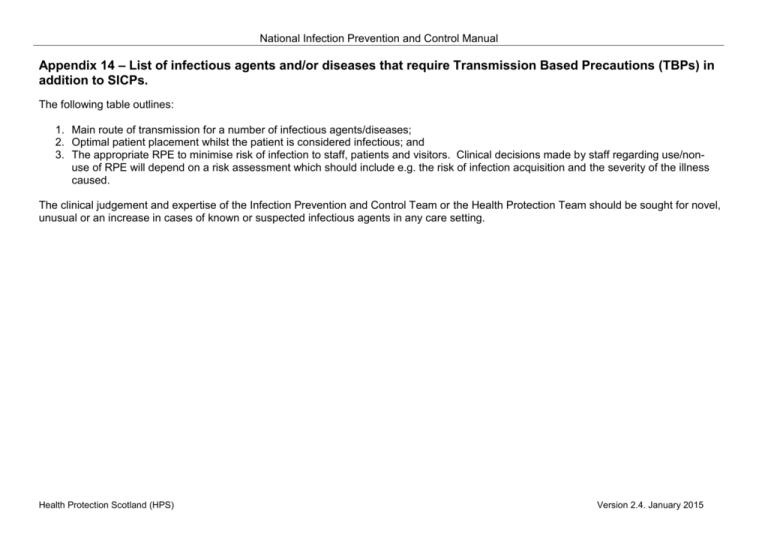
National Infection Prevention and Control Manual Appendix 14 – List of infectious agents and/or diseases that require Transmission Based Precautions (TBPs) in addition to SICPs. The following table outlines: 1. Main route of transmission for a number of infectious agents/diseases; 2. Optimal patient placement whilst the patient is considered infectious; and 3. The appropriate RPE to minimise risk of infection to staff, patients and visitors. Clinical decisions made by staff regarding use/nonuse of RPE will depend on a risk assessment which should include e.g. the risk of infection acquisition and the severity of the illness caused. The clinical judgement and expertise of the Infection Prevention and Control Team or the Health Protection Team should be sought for novel, unusual or an increase in cases of known or suspected infectious agents in any care setting. Health Protection Scotland (HPS) Version 2.4. January 2015 National Infection Prevention and Control Manual Pathogen Adenovirus (see footnote 1) Disease Upper +/- lower respiratory tract infection Main route of transmission Droplet Conjunctivitis Contact Bordetella pertussis Pertussis/Whooping Cough Droplet Chlamydia pneumoniae Pneumonia Droplet Clostridium difficile Clostridium difficile infection (CDI) Contact Coronavirus (see footnote 1 and 5) Acute respiratory syndrome (NonSARSCoV) Corynebacterium diphtheriae Diphtheria – Cutaneous Health Protection Scotland (HPS) Notifiable (see footnote 4) Droplet Contact Optimal placement whilst patient is considered infectious Single ensuite room Isolation room Respiratory and facial protection (RPE) for healthcare workers whilst patient is considered infectious Surgical Facemask (If there is a risk of FFP3 respirator or splashing or spraying of Hood for AGPs blood / body fluids from patient contact or procedure) Version 2.4. January 2015 National Infection Prevention and Control Manual Pathogen Corynebacterium ulcerans Disease Diphtheria – Pharyngeal toxigenic strains Main route of transmission Notifiable (see footnote 4) Droplet Optimal placement whilst patient is considered infectious Single ensuite room Isolation room Respiratory and facial protection (RPE) for healthcare workers whilst patient is considered infectious Surgical Facemask (If there is a risk of FFP3 respirator or splashing or spraying of Hood for AGPs blood / body fluids from patient contact or procedure) Gastrointestinal infections e.g salmonella Contact Epiglottitis (some GI Infections are notifiable. Refer to guidance) Droplet Haemophilus influenzae type b Herpes zoster (varicellazoster) (see footnote 2) Meningitis Droplet Shingles (vesicle fluid) Contact Shingles (lesions in the respiratory tract) Droplet / airborne Health Protection Scotland (HPS) and until patient has received 24 hours of appropriate antibiotics If lesions cannot be covered Version 2.4. January 2015 National Infection Prevention and Control Manual Pathogen Disease Main route of transmission Notifiable (see footnote 4) Influenza virus (Endemic strains) (see footnote 5) Influenza Droplet Measles virus (see footnote 2) Measles (rubeola) Droplet/airborne Mumps virus (see footnote 2) Mumps (infectious parotitis) Droplet Extrapulmonary Tuberculosis Contact Optimal placement whilst patient is considered infectious Single ensuite room Isolation room Respiratory and facial protection (RPE) for healthcare workers whilst patient is considered infectious Surgical Facemask (If there is a risk of FFP3 respirator or splashing or spraying of Hood for AGPs blood / body fluids from patient contact or procedure) and always if the patient has MDR or XDR TB Until Mycobacterium tuberculosis Pulmonary or laryngeal disease Tuberculosis Health Protection Scotland (HPS) Airborne patient has received 14 days of appropriate antibiotics If the patient has MDR or XDR TB Version 2.4. January 2015 National Infection Prevention and Control Manual Pathogen Disease Main route of transmission and until patient has received 24 hours of appropriate antibiotics Droplet Droplet Not required if the rash+/arthralgia has developed Not required if the rash+/- arthralgia has developed Droplet Neisseria meningitides Meningitis – meningococcal (Or presentation of clinical meningitis of unknown origin) Droplet Contact/Droplet Upper +/- lower respiratory tract infection Parvovirus B19 – (Erythema infectiosum – Erythrovirus B19) Slapped cheek syndrome Health Protection Scotland (HPS) Isolation room Pneumonia Parainfluenza virus (see footnote 1) Single ensuite room Respiratory and facial protection (RPE) for healthcare workers whilst patient is considered infectious Surgical Facemask (If there is a risk of FFP3 respirator or splashing or spraying of Hood for AGPs blood / body fluids from patient contact or procedure) Mycoplasma pneumoniae Norovirus Notifiable (see footnote 4) Optimal placement whilst patient is considered infectious Version 2.4. January 2015 National Infection Prevention and Control Manual Pathogen Disease Main route of transmission Notifiable (see footnote 4) Optimal placement whilst patient is considered infectious Single ensuite room Isolation room Respiratory and facial protection (RPE) for healthcare workers whilst patient is considered infectious Surgical Facemask (If there is a risk of FFP3 respirator or splashing or spraying of Hood for AGPs blood / body fluids from patient contact or procedure) Respiratory syncytial virus (RSV) (see footnote 1) Upper +/- lower respiratory tract infection Droplet Rhinovirus (see footnote 1) Upper +/- lower respiratory tract infection Droplet Rotavirus Gastroenteritis Droplet / contact Rubella virus (see footnote 2) German Measles Droplet Staphylococcus aureus (Enterotoxigenic) Scalded skin syndrome Contact If lesions cannot be covered Methicillin resistant Staphylococcus aureus (MRSA) Infection Contact Health Protection Scotland (HPS) Version 2.4. January 2015 National Infection Prevention and Control Manual Pathogen Disease Main route of transmission Notifiable (see footnote 4) Optimal placement whilst patient is considered infectious Single ensuite room Isolation room Respiratory and facial protection (RPE) for healthcare workers whilst patient is considered infectious Surgical Facemask (If there is a risk of FFP3 respirator or splashing or spraying of Hood for AGPs blood / body fluids from patient contact or procedure) Colonisation (either swab positive or positive as per clinical risk assessment criteria) Streptococcus pyogenes (Group A Strep) Respiratory Droplet Bacteraemia, meningitis, wound i.e. blood, cerebrospinal fluid or other normally sterile site Contact Droplet Pneumonia Meningitis Streptococcus pneumoniae Varicella virus (see footnote 2) Bacteraemia, meningitis, wound i.e. blood, cerebrospinal fluid or other normally sterile site Contact Chickenpox Droplet/airborne Health Protection Scotland (HPS) (presence in the wound is not notifiable Version 2.4. January 2015 National Infection Prevention and Control Manual Pathogen Viral Haemorrhagic Fever (VHF) Disease Main route of transmission Notifiable (see footnote 4) Optimal placement whilst patient is considered infectious Single ensuite room Isolation room Respiratory and facial protection (RPE) for healthcare workers whilst patient is considered infectious Surgical Facemask (If there is a risk of FFP3 respirator or splashing or spraying of Hood for AGPs blood / body fluids from patient contact or procedure) See http://www.hps.scot.nhs.uk/travel/viralhaemorrhagicfever.aspx?subjectid=00C Footnote 1 In routine clinical practice healthcare workers do not commonly wear masks when dealing with patients presenting with the “common cold” or “influenza – like illness”. However, in a patient with undiagnosed respiratory illness where coughing and sneezing are significant features, or in the context of known widespread respiratory virus activity in the community or a suspected or confirmed outbreak of a respiratory illness in a closed or semi closed setting, the need for appropriate respiratory and facial protection to be worn should be considered. Footnote 2 In relation to childhood illnesses and use of masks, no vaccine offers 100% protection and a small proportion of individuals acquire/become infected despite vaccination. PPE i.e. facial/respiratory protection should be used as a means of protecting from the risks that remain. For those staff who are unaware of their IgG immunity or vaccination history a FFP3 respirator must be worn at all times during contact with the patient. Footnote 3 Aerosol Generating Procedures (AGPs) can produce droplets <5 microns in size which may cause infection if they are inhaled. These small droplets, containing pathogens, can remain in the air, travel over a distance and still be infectious. AGPs procedures should only be carried out when essential. Where possible, these procedures should be carried out in well-ventilated single rooms with the doors shut. Only those healthcare workers who are needed to undertake the procedure should be present. Aerosol Generating Procedures (AGPs) are defined as: o o o o o o Intubation, extubation and related procedures, for example manual ventilation and open suctioning. Cardiopulmonary resuscitation. Bronchoscopy. Surgery and post mortem procedures in which high-speed devices are used. Some Dental procedures (e.g drilling) Non Invasive Ventilation (NIV) e.g. Bilevel Positive Airway Pressure Ventilation (BiPAP) and Continuous Positive Airway Pressure Ventilation (CPAP). Health Protection Scotland (HPS) Version 2.4. January 2015 National Infection Prevention and Control Manual o o High Frequency Oscillatory Ventilation (HFOV). Induction of sputum. Footnote 4 A list of notifiable diseases and organisms can be found in the Public Health etc. (Scotland) Act 2008. Schedule 1 http://www.legislation.gov.uk/asp/2008/5/contents Footnote 5 Additional guidance should be followed for known/suspected cases of novel influenza viruses, including avian influenza, MERS CoV. Health Protection Scotland (HPS) Version 2.4. January 2015
